Tagging sheep ears is an important flock management practice which is inexpensive, and can make accurate record keeping much easier. In addition to the numeric value of your ear tags, a well-planned sheep tagging system can make it easy to look into a large pen or paddock full of lambs or adult sheep, and quickly understand key information about different lambs in a large group. In this article we’ll cover the basics of ear tagging sheep.
We’ll also introduce you to a few sheep ear tagging systems which can help with management and identification, tell you when to ear tag lambs, and we’ll provide an illustrated guide that explains how to tag sheep ears step-by-step and avoid the vein so you don’t end up with a bloody mess.
Finally, we’ll provide links to a few reliable sheep ear taggers for sale online (including the one I use) in case you need to replace yours, or buy a new one to begin ear tagging your flock.
Let’s get started.
The Basics of How to Ear Tag Sheep
Ear tagging your sheep is an easy process if you have the right tools.
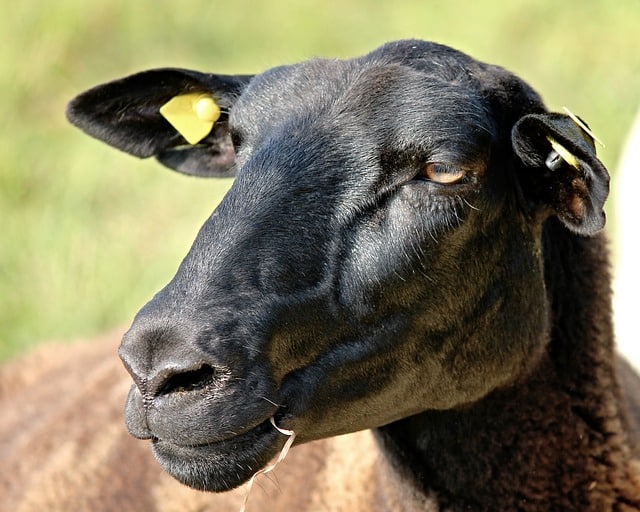
Think of it like piercing your ears – it hurts for a few minutes, but then it heals up and you don’t even notice.
There are really only a few key points to be aware of to ensure that you correctly place the ear tag in your sheep while avoiding the main vein in your sheep’s ear.
- Place the ear tag no more than 2 inches from the base of the sheep’s ear. Tagging your sheep’s ear too far away from the skull makes it more likely the sheep will get the tag caught on fencing, and can case her ear to droop from the weight.
- There is a vein that runs down the center of the sheep’s ear. Place your sheep ear tag either above or below the vein. Below the vein tends to offer a cleaner appearance when viewing the sheep from the front (important if you will show your sheep).
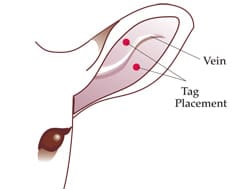
Additional considerations when tagging sheep ears are to take note of the temperature. If you apply ear tags in warm weather, it will be easier for the male end of the ear tag to be pushed through the female end (the plastic will be more flexible in warmer temperatures). You can ear tag sheep ears in the cold, but it’s not a bad idea if you do to keep the tags warm until they’re applied. Keep them in a bucket with some water bottles filled with warm water, and you’ll be all set.
Using a Sheep Ear Tagger
Most taggers for sheep and other livestock are constructed like a large set of pliers with a thin needle on one side to accommodate the male end of the ear tag, and a spring-loaded clip on the other side which allows you to center the female end and quickly release the ear tag once it’s in the sheep’s ear.
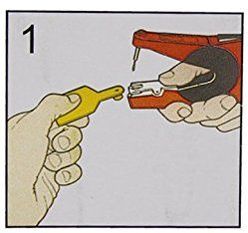
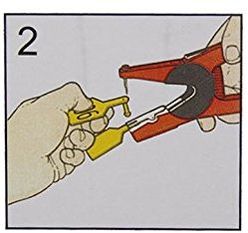
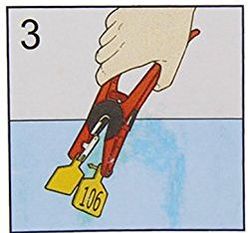
Time needed: 1 minute
How to Tag Sheep Ears
- Put the Tag in the Ear Tagger
Slide the female side of the ear tag beneath the spring-loaded clip. Next, slide the male side of an ear tag onto the needle.
- Align the Ear Tag
Align the hole in the female side of the ear tag with the male side of the ear tag.
- Disinfect the Tag and Needle
Quickly dip the ear tag and ear tagger into disinfectant.
- Position the Ear Tag
Place the ear tagger on the animal’s ear in the correct position, and quickly squeeze to pierce the ear and apply the ear tag.
- Remove the Tag and Release the Sheep
Open the ear tag pliers, and press the spring-loaded clip to release the ear tag from the pliers. Release the sheep.
How to Use a Sheep Tagging System on Your Farm
Tagging sheep ears is a pretty quick and easy process, and with careful planning, your ear tags can do more than simply provide a number for each lamb born on your farm … they can allow you to quickly understand key information about sheep from a distance.
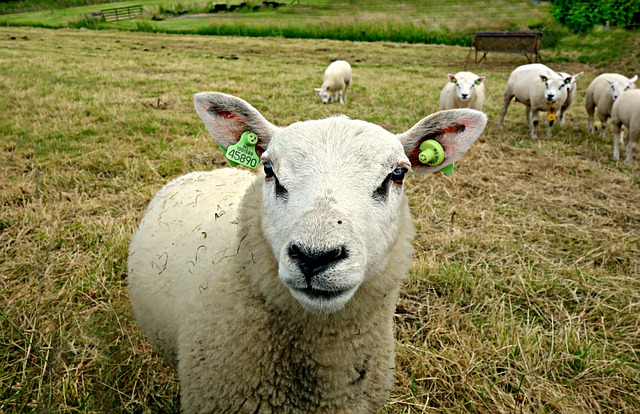
Here are a few general principles which you could adopt to help make your ear-tagging more useful on your farm:
Which Ear do You Place the Tag In?
I found that it was helpful to apply ear tags in one ear for ewe lambs, and in the opposite ear for ram lambs. This was helpful when all the lambs were young and running together — I could quickly look into a pen and pick out which lambs were rams and which were ewes based on which side their ear tag was in.
What Color is the Ear Tag?
If you use more than one stud ram in your flock, consider giving all of the lambs from each ram a different color tag. For example, all of the lambs sired by Stud A might have yellow tags, and all of the lambs sired by Stud B might have blue ear tags. This makes it very easy to get a general idea about your ram’s performance, just by looking at a pen full of lambs. It is also helpful if you have customers coming by to pick out and purchase show lambs — rather than looking up each lamb to verify the sire, you’ll know just by looking at them.
What Number is the Ear Tag?
I found it was helpful to incorporate the birth year as the first part of the number on an ear tag. For example, all lambs born in 2018 might have “8” as the first number of the tag (801 for the first lamb, 802 for the second lamb, 803 for the third lamb born in 2018, etc.). This way you can quickly get an idea of the relative age of lambs in your pen by looking at the later number (you’d know lamb 807 was probably quite a bit older than lamb 863). As you add lambs to your brood ewe flock, you can quickly determine the age of your ewes by looking at the first number of their tag. That will tell you their birth year.
It doesn’t take much to come up with a very effective sheep tagging plan for your farm which will enhance your ability to manage your flock effectively.
What Size Ear Tag is Best for Sheep?
When tagging sheep ears, one of the most important decisions lies in selecting a size and shape of your ear tag.
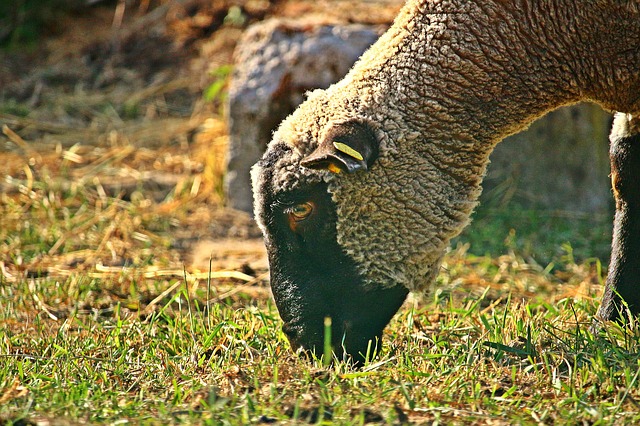
Larger tags are easier to see from a distance, but you’ll generally have to wait longer to tag your lambs (or you might tag them with a small tag, and then replace that with a larger tag in the same hole later). Larger tags are more likely to catch in welded wire fencing. When this happens, the ear tag can rip out of your sheep’s ear.
Smaller ear tags can be applied to younger lambs, and are less likely to catch on fencing and rip out, but they can be hard to read from a distance.
I also find that it’s helpful to think about the size of your sheep. If you have a flock of Shetland sheep, then you will probably want to use smaller ear tags than you would with a large sheep breed like Columbias or Suffolks.
Ear Tagging Sheep the Right Way
If you own a small hobby farm, or are just getting started raising sheep, then purchasing an ear tag applicator and 100 ear tags like this set on Amazon, is a great way to go. This can set you up for a few years.
For a larger flock of sheep (or if you think your farm will grow significantly in the years ahead) I hope that some of the ideas I offered about coming up with a strategy or system for tagging sheep ears are helpful.
If this article helped you, please share it. And if you’d like to receive more articles and guides like this one – sign up and receive our newsletter.

